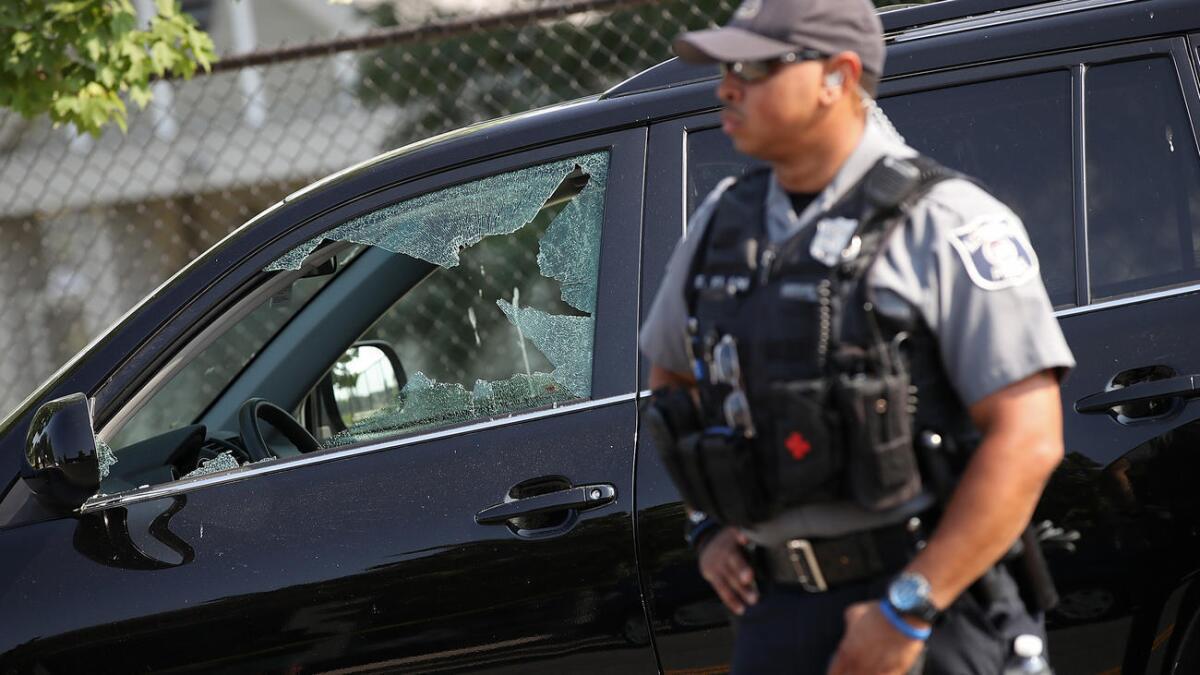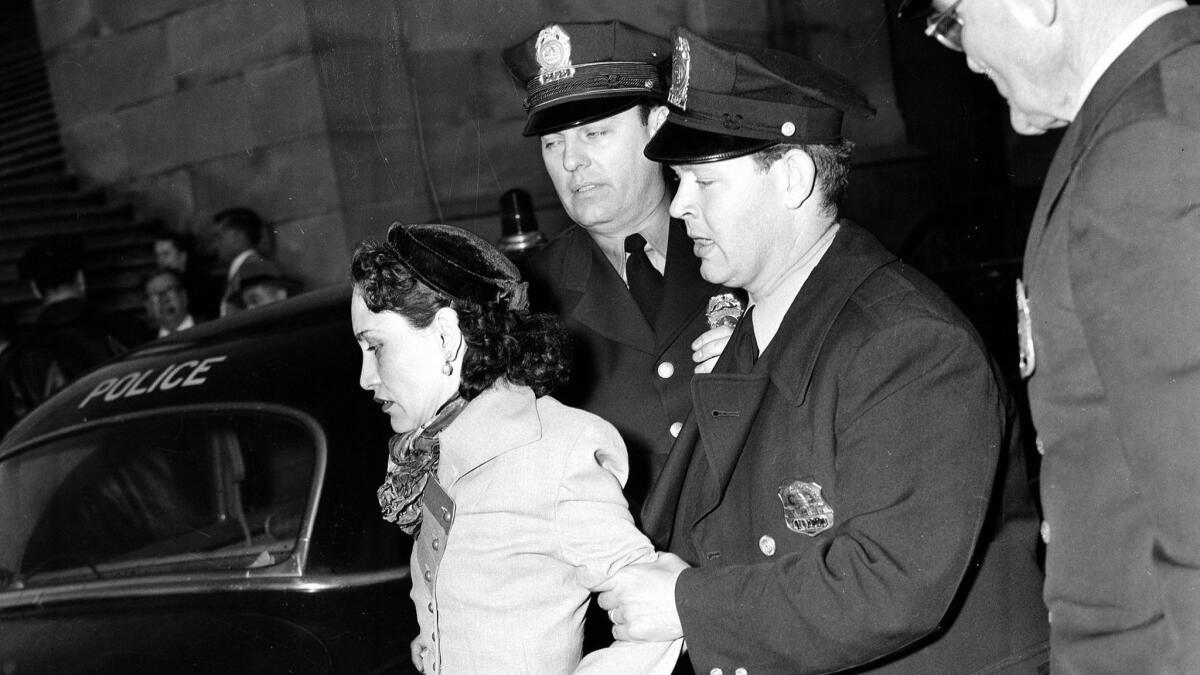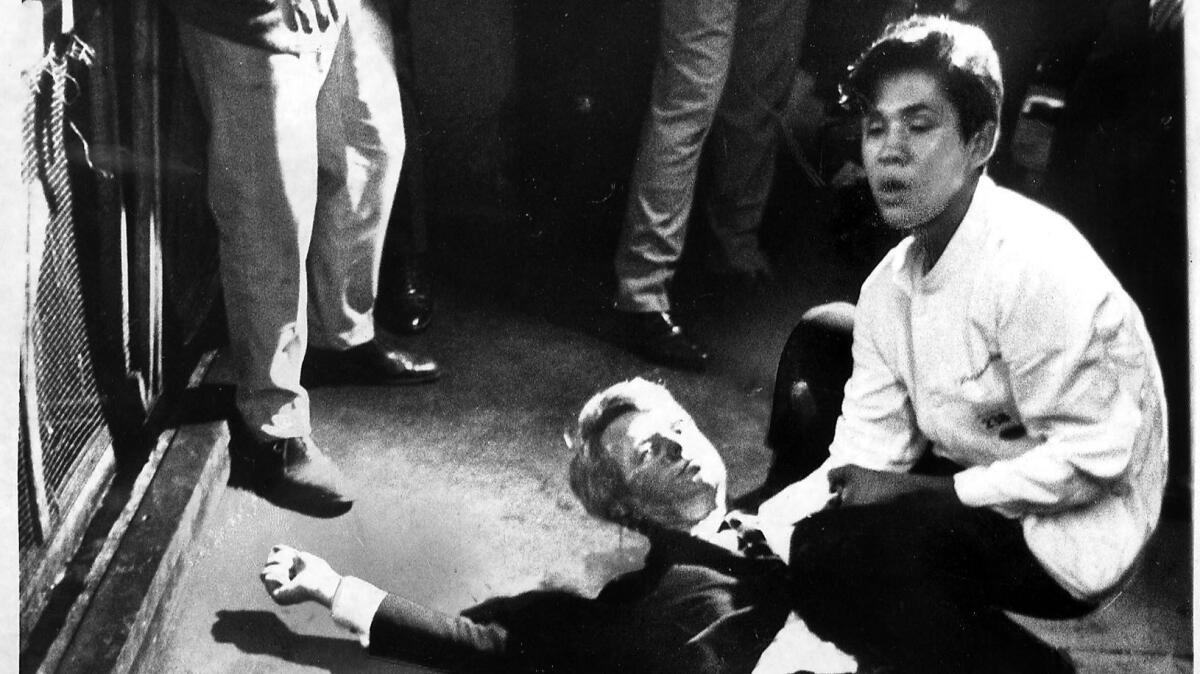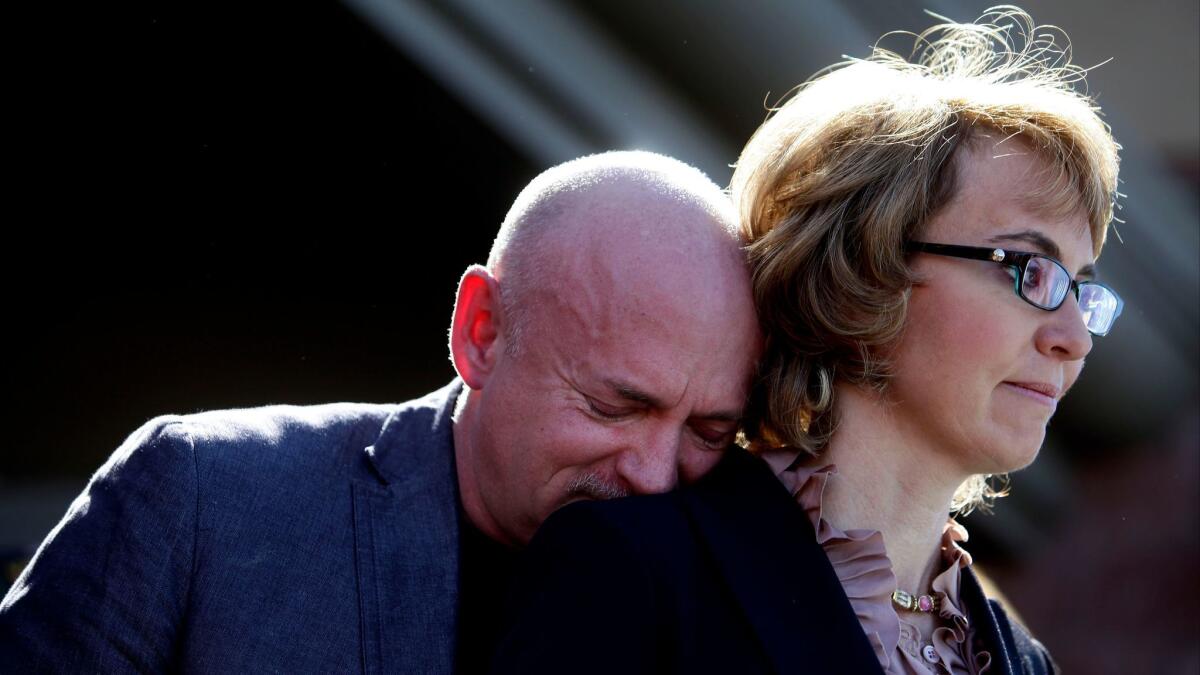Virginia shooting: Members of Congress have been targets of attacks in the past

March 1, 1954
‘Viva Puerto Rico libre’
Four Puerto Rican nationalists entered the U.S. Capitol with automatic pistols and began shooting from an upstairs spectators’ gallery onto the crowded floor of the House, firing nearly 30 shots. During the shooting, the gunmen unfurled a Puerto Rican flag, and Lolita Lebron, one of the four shooters, shouted, “Viva Puerto Rico libre!”
No deaths resulted from the attack, but five representatives were wounded, including one congresswoman who was shot in the chest.
Rafael Cancel Miranda, Irving Flores, Andres Figueroa Cordero and Lebron all received lengthy prison sentences. In 1979, President Carter granted them clemency and they were released. At that time, Lebron said: “We didn’t do anything that we should regret. Everyone has the right to defend their right to freedom that God gave them.”

June 5, 1968
RFK assassination
On June 5, 1968, Sen. Robert F. Kennedy (D-N.Y.) was fatally shot at the Ambassador Hotel in Los Angeles moments after finishing his victory speech upon winning the California presidential primary. He died the next day at Good Samaritan Hospital.
Sirhan B. Sirhan, a 24-year-old Palestinian immigrant, was convicted of Kennedy’s murder and sentenced to death on April 17, 1969. His sentence was commuted to life in prison in 1972. The New York Times reported that Sirhan believed at the time that Kennedy was “instrumental” in the oppression of the Palestinian people.

Sept. 18, 2001
Anthrax attacks
One week after the Sept. 11, 2001, terrorist attacks, beginning on Sept. 18, letters containing anthrax spores were mailed to news media offices and two Democratic senators,
In August 2008, prosecutors announced that charges were to be brought against Bruce E. Ivins, a government scientist. Ivins took his own life before those charges could be filed. On Feb. 19, 2010, the FBI, Department of Justice and the U.S. Postal Inspection Service issued a summary of their investigations concluding that Ivins acted alone in mailing the anthrax letters.

Jan. 8, 2011
Gabby Giffords shooting
On Jan. 8, 2011, U.S. Rep. Gabby Giffords was meeting with constituents in a Safeway store parking lot outside Tucson when a gunman, later identified as 22-year-old Jared Loughner, opened fire.
The shooting left six dead. Thirteen were injured, including the congresswoman, who was shot in the head and suffered permanent brain damage.
Authorities believed that Giffords was the target of the attack. Federal evidence filed after the shooting noted Loughner’s professed love of guns, rants about semiautomatic weapons and an early encounter with Giffords while he was still in high school.
One tipster recalled seeing Loughner at the library on a regular basis watching videos of Giffords’ speeches and “repeatedly talk[ing] loudly to the computer causing a disturbance to others in the area.”

Twitter: @kelceycaulder
ALSO
Who is Steve Scalise? A quick look
Watch: Sen. Bernie Sanders says alleged shooter volunteered for his presidential campaign
Sign up for Essential California
The most important California stories and recommendations in your inbox every morning.
You may occasionally receive promotional content from the Los Angeles Times.







